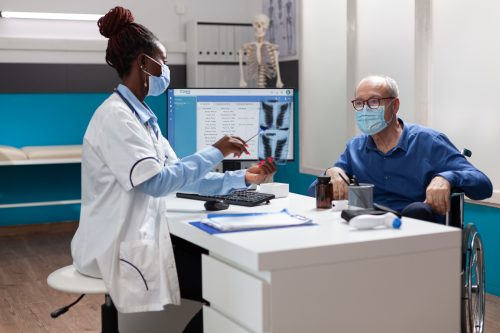
Ensuring the safety and well-being of both patients and staff is paramount. With the Occupational Safety and Health Administration (OSHA) setting standards to protect workers from occupational hazards, healthcare organizations face unique challenges in maintaining compliance due to the complexity of their operations and the diverse array of risks inherent in patient care. In fact, according to OSHA, healthcare workers are at a significantly higher risk of workplace violence compared to workers in other industries. In this blog, we’ll delve into the best practices that healthcare organizations can adopt to achieve and uphold OSHA compliance. Thus, fostering a safe and secure environment for all stakeholders.
Understanding OSHA Regulations
Before diving into best practices, it’s crucial to grasp the scope of OSHA regulations applicable to healthcare settings. OSHA standards encompass various areas, including:
Bloodborne Pathogens
Given the nature of healthcare work, employees are at risk of exposure to bloodborne pathogens like HIV, Hepatitis B, and Hepatitis C. OSHA’s Bloodborne Pathogens Standard mandates protocols for minimizing exposure incidents. These protocols entail the use of personal protective equipment (PPE), safe handling of sharps, and comprehensive training. OSHA requires annual training of all staff that are exposed to Bloodborne Pathogens. See our OSHA Training courses at AMC.
Hazard Communication
Healthcare facilities must adhere to OSHA’s Hazard Communication Standard. This ensures that employees are informed about the hazards associated with chemicals used in the workplace. The standard involves maintaining Safety Data Sheets (SDS), proper labeling of hazardous substances, and providing training on chemical safety.
Workplace Violence
Healthcare workers often face the threat of workplace violence. Preventive measures are necessary. With that said, OSHA requires healthcare organizations to develop violence prevention programs. These programs encompass staff training, security measures, and protocols for reporting and responding to violent incidents.
Best Practices for OSHA Compliance in Healthcare

Now, let’s explore the best practices that healthcare organizations can adopt to ensure OSHA compliance and foster a culture of safety.
Conduct Regular Risk Assessments
Perform thorough risk assessments to pinpoint workplace hazards, spanning from infectious diseases to ergonomic risks. These evaluations entail a systematic review of the workplace to identify potential threats to safety. By scrutinizing different facets of the work environment, including physical conditions and operational processes, organizations can comprehensively grasp potential risks and proactively address them.
In healthcare settings, a key concern is the risk of exposure to infectious diseases. Healthcare workers often care for patients with contagious illnesses. This makes them vulnerable to infection. Hence, risk assessments must evaluate infection control practices. Assessments should include hand hygiene, PPE usage, and contaminated material handling procedures. Identifying shortcomings in these measures enables organizations to implement interventions targeting transmission reduction. By doing so, you safeguard both staff and patients.
Apart from infectious disease risks, healthcare organizations must tackle ergonomic hazards leading to musculoskeletal injuries among staff. Healthcare workers frequently engage in tasks involving repetitive motions, awkward postures, and heavy lifting. Unfortunately, these tasks increase the risk of strains, sprains, and other ergonomic injuries. Ergonomic assessments help identify hazards like poorly designed workstations or insufficient lifting equipment, facilitating the implementation of solutions to mitigate risks. This could entail workstation redesign, provision of ergonomic tools, and training on proper body mechanics and lifting techniques.
Implement Effective Training Programs
Provide thorough training to employees on OSHA standards relevant to their roles, including bloodborne pathogens, hazard communication, and workplace violence prevention. Tailor training sessions to employees’ specific responsibilities and ensure regular updates to keep pace with evolving regulations.
At AMC, our expert team specializes in designing customized courses and training solutions that address OSHA standards such as bloodborne pathogens, hazard communication, and workplace violence prevention. With our tailored courses and regular updates to keep pace with evolving regulations, you can ensure your employees have the knowledge and skills they need to stay safe and compliant.
Provide Adequate Personal Protective Equipment (PPE)
Equip employees with appropriate PPE, such as gloves, masks, and goggles, to mitigate exposure risks. Ensure that employees receive training on the proper use, maintenance, and disposal of PPE to maximize effectiveness.
Maintain Comprehensive Recordkeeping
Document workplace injuries and illnesses. OSHA mandates that healthcare organizations maintain records of all work-related injuries and illnesses, including information such as the nature of the injury or illness, the date of occurrence, and any medical treatment provided. By accurately documenting workplace injuries, organizations can track injury trends over time, identify common causes of injuries, and implement targeted interventions to prevent future incidents. Additionally, maintaining accurate injury records is essential for compliance with regulatory reporting requirements and can help organizations identify potential liabilities and risks.
Foster a Culture of Safety
Fostering a safety culture involves actively engaging employees in safety initiatives through mechanisms like safety committees or workgroups comprising representatives from various departments. These forums facilitate discussions, sharing of insights, and collaborative efforts to identify and implement safety improvements.
Encouraging hazard reporting is equally vital. Employees often spot hazards first but may hesitate to report them due to fear of reprisal or skepticism about being taken seriously. Healthcare organizations need to establish an environment where reporting is encouraged and rewarded, possibly through anonymous reporting systems, hazard identification training, and public recognition of reporting efforts.
Conclusion

Achieving OSHA compliance is essential for healthcare organizations to safeguard the health and safety of their workforce and patients. By understanding OSHA regulations, implementing best practices, and fostering a culture of safety, healthcare organizations can create a secure environment conducive to optimal patient care and staff well-being. Prioritizing safety and compliance not only mitigates risks but also enhances organizational resilience and reinforces trust in the healthcare system.
Transform your healthcare organization’s compliance strategy with American Medical Compliance (AMC) today! Take advantage of our premium, fully customized compliance training courses, offered free for teams of 100 employees or more. Don’t miss out on this opportunity to elevate your team’s compliance standards. Contact us now to get started. Click here.



